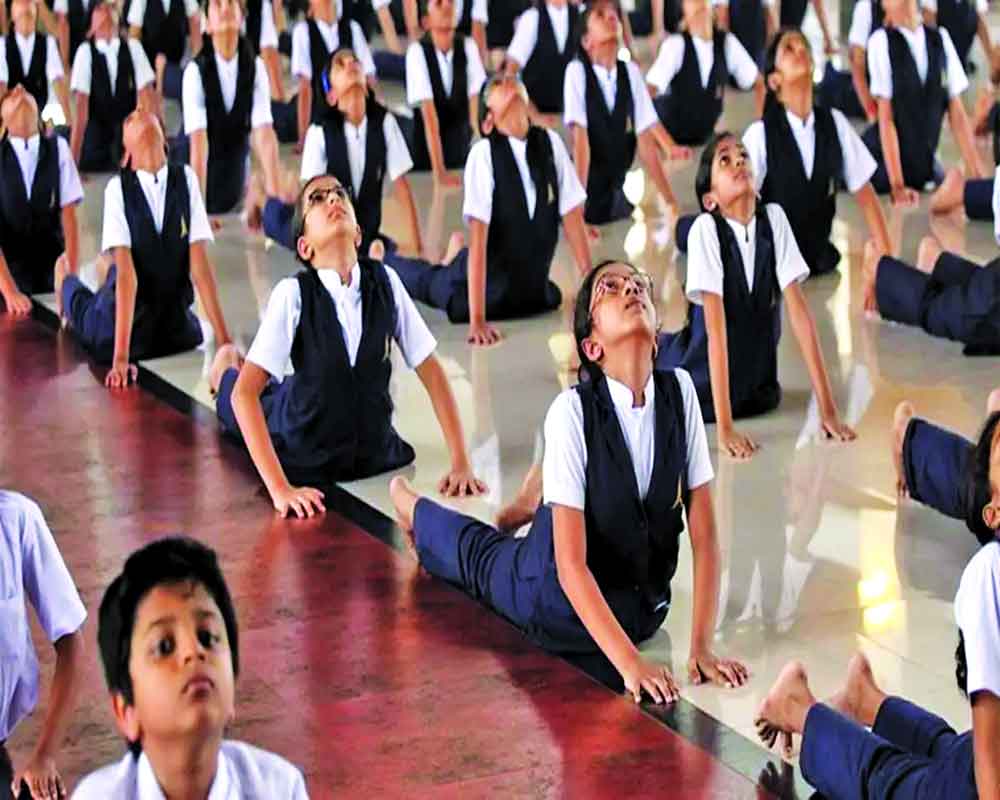Practicing yoga plays a key role in helping the sound state of minds of school students
Yoga is an ancient Indian practice that allows the mind and body to be connected with each other. It incorporates meditation, breathing exercises, and stretches to reduce stress, and allow relaxation, and rejuvenation.
Yoga is integral to physical and mental health. With Yoga, students can be healthy in body, spirit, and mind, thus encouraging them to excel in academics. Yoga improves balance, endurance, and strength in children. It also offers psychological benefits to children. Research has shown that Yoga can improve focus, memory, classroom behavior, self-esteem, and academic performance, and also reduce anxiety and stress in children. Yoga can help children with attention deficit hyperactivity disorder (ADHD) by improving the core symptoms such as inattentiveness, hyperactivity, and impulsivity. It can also motivate school performance in children with ADHD.
Schools should integrate Yoga as a part of physical education programs or school curriculums to help students reap the benefits of what it offers. Yoga helps students physically and mentally by reducing stress and anxiety, while shielding them from the pressure of academics. Yoga is known to be an antidote to stress. It combines popular stress-reducing techniques, including exercise and learning, to control breath, clear the mind, and relax the body.
Children who regularly practice Yoga not only report lower levels of stress and anxiety, but perform better in schools. Yoga also improves memory and concentration. Students need to have sharp minds to learn new things and prepare for exams. Yoga helps to improve memory function in both adults and children. It also helps to enhance contraction levels in children.
Yoga helps to improve flexibility, balance, and posture. Sitting down to study for long hours at a stretch can lead to incorrect postures. Poor postures in childhood can develop into serious health complications in adult life. Regular practice of various asanas leads to correction of posture, improves balance in the body, and makes the body flexible as it brings equilibrium to the body.
Students spend many hours in sedentary poses and tend to consume unhealthy food which is a result of the new age lifestyle. Yoga helps students stay fit and healthy through the regular practice of asanas. Yoga helps to curb the problem of childhood obesity at a young age.
Breathing is essential to life-force and movement. How we breathe is directly related to our overall well-being. Breathing affects our movement, posture, and ability to manage stress and stay calm. With the help of pranayama and other breathing exercises in Yoga, students can learn how to master the technique of breathing correctly and improve their quality of life. Yoga promotes inner healing rather than focusing on the outside. It is important for people to love and respect their own bodies – a crucial message for young children who are constantly advertised with high standards of body image ideas on social media. Yoga teaches children to be comfortable in their own skin and nurture it well.
Good immunity is essential for a student to perform well in school. Children with good immunity have better attendance and academic performance. Besides its many health benefits, Yoga boosts immunity and prevents attacks from different viruses and bacteria by increasing the levels of antibodies in children.
Mindfulness is being aware of your surroundings and living in the present moment. In today’s day and age, students have so many activities going on that they forget to take a moment and be present in the moment. Yoga helps to promote mindfulness in students and makes them less anxious and relaxed. Students also become self-aware and creative when they focus on the present moment.
(The author is Director, Vishwa Vidyapeeth Group of Schools)


























